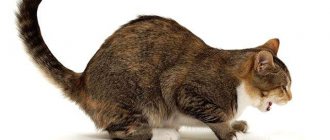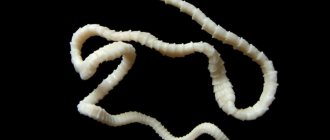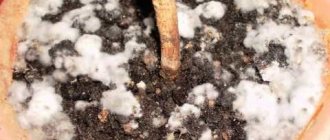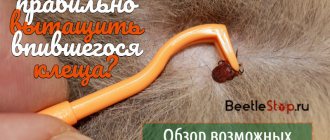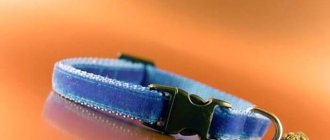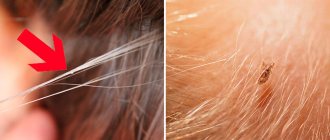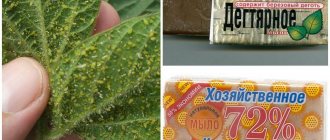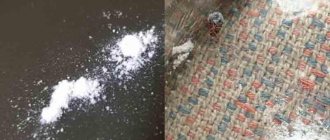What parasites can harm human health?
Some parasites in herring are able to survive in the aggressive environment of the human stomach and intestines. They perfectly adapt to the conditions of the gastrointestinal tract, reproduce there and cause irreparable harm to the health of their new “owner”.
The most dangerous types of helminthiasis transmitted through the consumption of lightly salted herring:
- Opisthorchiasis;
- Diphyllobothriasis;
- Anisakidosis.
Opisthorchiasis. This type of helminthiasis is caused by the cat fluke. Its carriers are mammals that consume live fish. If poorly processed fish ends up in human food, then he too becomes a target for opisthorchiasis. Fish is an intermediate host of the cat fluke and a carrier of the disease. The consequences of opisthorchiasis are damage to the digestive organs, liver, gall bladder and bile ducts.
Diphyllobothriasis. This type of parasitic infestation causes a wide tapeworm, reaching a length of 25 m. Diphyllobothriasis provokes the following symptoms: anemia, abdominal pain, nausea and weakness, sudden weight loss, loss of appetite.
Anisakidosis. The disease is caused by anisakids - roundworms similar in appearance to roundworms. Parasites actively feed in the human stomach and intestines, violating the integrity of the mucous membrane. This is accompanied by symptoms similar to those of appendicitis: nausea and vomiting, diarrhea, fever. Massive anisakid infestation can be fatal.
Diphyllobothriasis
This dangerous disease is caused by a huge tapeworm, sometimes reaching a length of up to 25 meters. The source of infection with diphyllobothriasis can be fish, raw or poorly cooked. Most often, the population of Japan who loves sushi is exposed to this disease.
For 6 months, the disease may not manifest itself in any way. After which symptoms gradually begin to appear in the form of nausea, accompanied by vomiting, constipation, followed by diarrhea.
The most pronounced symptoms of diphyllobothriasis:
- nausea;
- vomit;
- weakness and increased fatigue;
- diarrhea;
- constipation;
- feverish condition.
How can you tell if there are parasites in herring?
To avoid purchasing herring with parasites, you should take precautions. Care when choosing fresh or lightly salted fish will help avoid infection with helminths. But sometimes parasites are detected already during cutting and preparation.
Signs of the presence of parasites in herring:
- A dent after pressing with a finger that remains on the carcass for a long time;
- Cloudy eyes with a gray tint;
- Unnaturally swollen abdomen;
- Unpleasant odor and dark color of gills;
- When cleaning the fish, it is noticeable that the insides have a repulsive sulfuric, putrid odor;
- Broth made from poor-quality fish does not have a characteristic greasy film; instead, white flakes of foam from coagulated protein appear on the surface.
In large retail outlets or in specialized stores selling fish, all products undergo sanitary control. These precautions are a reliable insurance against purchasing fish infected with parasites.
What to do with helminth-infected fish
Marine fish are infected with parasitic worms to such an extent that the sale of infected fish is officially permitted if a veterinary and sanitary examination has determined the death of the larvae. Anisakids die from cold under the following conditions:
- in 10 minutes at 18 C;
- for 4-5 days at 20 C;
- for 14 days at 30 C.
Conscientious producers comply with this temperature regime when freezing fish, so it is almost impossible to become infected with worms after eating herring from a specialized fish store or a reputable supermarket.
After defrosting, such fish can be salted or marinated and consumed even without heat treatment.
A herring bought at the market of a provincial town, secondhand or caught with one’s own hands, is a completely different matter. It is unacceptable to salt or pickle it for immediate consumption, since anisakids can survive in pickled or salted herring prepared in a standard way for up to two months. This is confirmed by the video below.
Although salting standards for the destruction of anisakis have not been developed, they can be used to neutralize fish from Siberian flukes: for fish up to 25 cm in length, strong salting is required for 21 days, for fish over 25 cm, 40 days.
If it is not possible to freeze herring at the above temperature, and there are no plans to salt it, the only option is to thermally treat the fish, i.e. boil or fry. Herring with worms becomes disinfected after just 10 minutes of cooking at a temperature of 60 C and above.
Are helminths dangerous in smoked fish? Perhaps, since anisakids can easily tolerate temperatures up to 45 C, while cold smoking occurs at temperatures up to 25 C. If you buy hot smoked herring, it is advisable to ask the merchant if he has documents confirming the passage of veterinary and sanitary control. In the absence of such, it is better not to risk your health.
As domestic and foreign studies show, herring with parasites is not the exception, but rather the rule: in some waters, up to 95-100% of the herring population is infected with anisakiids that are dangerous to humans.
Once in the human body, anisakids can cause stomach ulcers and even perforation of the intestines with the development of peritonitis, which can be fatal. Salted and pickled herring, as well as cold smoked fish, are no less dangerous than raw herring. Only heat-treated herring is guaranteed to be safe.
What do parasites look like in herring?
You can see parasites in herring with the naked eye. Their main habitat is near milk or caviar.
The appearance of anisakidae, one of the parasites in herring, resembles an roundworm. These are spindle-shaped roundworms 5-6 cm long. There are 3 lips on one of the rounded ends of the anisakids. The larvae of this parasite are extremely dangerous for humans.
In the cat fluke, which provokes the development of opisthorchiasis, the size of the flattened body does not exceed 3 cm, and its thickness is 1.5 cm. They enter the human body in the form of larvae, indistinguishable to the ordinary eye.
Heat treatment of the fish would certainly destroy these parasites in the herring, since cooking at high temperatures (100°C) completely destroys the viability of the helminths. However, salted or smoked herring is not exposed to high temperatures, maintaining the risk of infection.
Saline solution does not always destroy larvae and mature individuals. In some cases, this measure even makes the parasites more viable. The smoking point is so low that it cannot guarantee safety. On the contrary, increased temperature during smoking is an additional factor for the favorable development of parasites in herring.
What is anisacidosis and is it dangerous for humans?
Anisakidosis is a parasitic disease caused by the parasitic development of a worm called anisakid in the human body. Humans are the definitive host for these worms. First, they enter the body of crayfish and other small babies. In turn, they are eaten by fish and thus the anisakid migrates to a new, larger host. Ultimately, a person eats the fish and becomes infected with a parasite, which fully develops in his body, reaching a size of up to 4 cm.
Anisakids develop while in a capsule, where they curl up and form a ball. When cutting fish, they are sometimes difficult to detect when the parasites have not yet reached a significant length. Almost all herring are infected with anisacids.
When infected, the parasite establishes itself and develops comfortably in the gastrointestinal tract. It can settle in the stomach, liver, pancreas, and intestines. Also, the larva of a herring worm can settle in the esophagus and even in the throat, that is, in any location along the way from the mouth to the colon.
When a larva invades, the body begins to react with local inflammation. The blood changes its chemical composition due to the production of increased numbers of eosonophils, blood cells that react to allergens. The immune system tries to fight the invasion, but to no avail.
Consequences of parasitic influence of anisakid:
- if the stomach is damaged - gastritis, ulcer;
- with damage to the liver and gallbladder - hepatitis, obstruction of the bile ducts, cirrhosis, cholecystitis;
- if the pancreas is damaged - pancreatitis;
- with intestinal damage - peritonitis, necrosis, intestinal obstruction.
The parasite does not live indefinitely in the human body. Its lifespan is short and amounts to 2-3 months. They do not hatch new larvae due to the fact that they do not survive to reproductive age. However, during these months they manage to cause serious damage to the health of their owner. And even after the death of an anisakid, a person will feel the symptoms of concomitant diseases for a very long time, sometimes for years.
How to protect yourself from infection?
To avoid getting parasites in herring, you should follow simple rules when purchasing:
- Avoid buying gutted herring, since it is much easier to detect parasites when cutting fish than in preserves and semi-finished products;
- You need to buy fish only in specialized retail outlets, departments of large supermarkets;
- Fresh fish is stored in the freezer compartment of the refrigerator at a temperature not exceeding -20°C;
- Holding fish for 10 minutes at a temperature of -30°C will completely protect it from parasites;
- Fry the fish for at least 20 minutes, cutting the carcass along the ridge;
- Cooking of fish is carried out for at least 20 minutes from the moment the water boils;
- Cooking fish pies in the oven should not take less than half an hour.
Does salt kill parasites?
Salt destroys helminths and their larvae, but it is necessary to strictly adhere to a certain salting scheme.
The table shows the criteria for salting fish, leading to the death of helminths and their larvae.
| Salting conditions | Solution temperature | Days after which the larvae die |
| Hot Ambassador | 15 – 16°С | 9 |
| Cold Ambassador | 5 – 6°С | 13 |
| Dry salting | 13 | |
| The fish is gutted | 12 | |
| Whole fish | 13 |
Salt should make up at least 20% of the weight of the fish!
After keeping the fish in this solution, it must be soaked. Rinse under water and place in a container with water. Leave for a couple of days. Excess salt will be released and the fish is ready to eat.
Is it possible to eat herring infected with parasites?
Of the 300 species of parasites found in fish, only a few varieties are dangerous to humans. This danger persists only if fish dishes are improperly stored and prepared. Freezing freshly caught herring at very low temperatures will kill the parasites in the fish's intestines, preventing them from getting into the muscle tissue. After removing the caviar, milt and intestines of the herring, it can be easily eaten.
Having discovered parasites in the intestines of herring, you need to make sure that they are not viable. Dead individuals are not dangerous; they only harm the aesthetic feelings of consumers.
What to do in case of infection?
A parasitologist or infectious disease specialist treats patients infected with parasites. The incubation period for anisakidosis is 10-14 days. To clarify the diagnosis, differential diagnosis of diseases with similar symptoms is carried out. During laboratory testing, parasite larvae are found in feces and vomit.
The patient undergoes an FGDS - examination of the digestive system using a gastroscope. As a result of this study, mucosal erosions and helminth larvae can be detected in the stomach and duodenum. When collecting anamnesis, the doctor clarifies whether the patient has consumed fish that has not been thermally processed.
Treatment of parasites can be either surgical or medicinal. Anthelmintic drugs – Mebendazole, Albendazole. In case of complex forms of helminthiasis, the patient is monitored at the dispensary for a year and undergoes regular fibrogastroduodenoscopy (FGDS).
Author of the article:
Danilova Tatyana Vyacheslavovna |
Infectious disease specialist Education: in 2008, received a diploma in the specialty “General Medicine (Therapeutic and Preventive Care)” at the Russian Research Medical University named after N. I. Pirogov. I immediately completed an internship and received a diploma as a therapist. Our authors
How to treat: medications and traditional methods
Treatment methods for anisacidosis are selected based on the location of the parasite, the severity of symptoms, the degree of damage to the body, and allergic reactions. The therapy can use both medications with antiparasitic effects and surgical intervention in severe cases of the patient. The use of traditional methods of treatment as an additional effect on the body can significantly help the patient.
Surgery
Surgery is performed only when anisakidosis causes acute symptoms and complications. Acute pain, fever and nausea may indicate serious complications. The instrument used to remove the anisakid is an endoscope. Extraction occurs from the intestines, stomach or esophagus.
Even after conservative removal of the worm, monitoring of the body's condition for 1 year using endoscopy is required.
Drug therapy
If the condition does not require surgical measures, then anisakidosis can be cured with the help of antiparasitic medications. Usually prescribed:
It is important to follow your doctor's recommendations when taking these medications. The course of therapy is short-term, but the effect is usually positive.
If the parasite in the body provokes allergic reactions, then the patient needs to take antihistamines:
- in case of anaphylactic shock, be sure to call an ambulance;
- for Quincke's edema - ambulance;
- for asthma - salbutamol to relieve an attack and ketatifen with a prolonged cumulative effect;
- for skin reactions - antihistamines such as suprastin or other new generation drugs.
Do Antihelminth Forte drops help against parasites, or is it a scam?
How the drug Paptlock Plus helps fight papillomas, read more here.
Traditional medicine
If a living anisakid has already entered the human body and is firmly established there, treating it with folk remedies alone is ineffective. Traditional methods are effective as adjuvant therapy. Also, for prevention, folk remedies can prevent the development of anisakid.
List of remedies for treating anisacidosis at home:
- Hot red pepper . It can be added to food, preferably fresh. Those diagnosed with gastritis, colitis and ulcers should not eat.
- Ginger root. It is a natural remedy against parasites and many pathogenic bacteria. It can be consumed both dried and fresh. Contraindicated for peptic ulcers of the digestive system.
- Chopped black pepper
- Mustard seeds. Contraindicated for children, people with gastrointestinal diseases in the acute phase, strokes, bleeding, and allergy sufferers.
- Infusion of bitter wormwood .
- Tansy infusion .
- Infusion from walnut .
All of the above remedies must be taken in moderation. Despite their natural origin, excessive use of traditional medicine can lead to complications of existing diseases and allergic reactions. Herbal infusions are always used according to the instructions.
About anisakidosis in the video:
